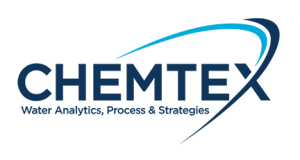
Tracking Cooling Tower Inhibitors
Cooling tower inhibitors must be administered and maintained at the correct concentration to ensure they do their job. Low levels can result in scale and corrosion, while excess inhibitor is a waste of money, and may contribute to deposits on heat transfer surfaces.
Over the years, the industry has had a variety of ways to track and evaluate the concentration of inhibitors.
Obsolete Technologies
For example, in the old days, it was common to test directly for phosphonate, which demanded 30-minute ultraviolet light digestion. This was time consuming and required extra equipment. Further complicating matters, different phosphonates demanded multipliers. Another common technique was performing a five-step drop test, which was prone to several interferences and variables. The pill and drop count test has been proven to be off by a factor as great as 30%.
Testing for tracers was initially chromate, then shifted to molybdenum. This is simple and easy, and the indirect test is accurate. Several reagents are available, and it takes just three to five minutes for an accurate reading.
Polymer testing is a method which tests for polymer in the cooling tower water. This is a direct test for the polymer treatment component, so it may require special testing reagents and specific curves for each polymer. Also, the demand for each polymer may change as the water characteristics change, so this testing method can be inaccurate.
Fluorescent Dye Tracks Chemical Levels
Fluorescent-traced product feed and control systems are a new generation of solution to the problem. This method involves adding a colorless fluorescent dye called PTSA to the cooling water inhibitor, serving as a treatment level tracer. PTSA levels can be accurately measured by hand or electronically in just seconds. Electronic testing enables continuous on-line monitoring of the inhibitor levels in the system. While there can be some interference from debris in the water, testing with PTSA dye is a far cry from the slow and labored practices of the past. Also, PTSA is relatively safe for the environment and is not generally subject to discharge restrictions.
Verifying your treatment program is on target is just as important as the treatment program itself. Review the tools you are using and make certain you are employing the best tools for the job. Chemtex is always here to help you answer any questions.



/NQA-ISO-9001-Logo-ANAB.jpg)